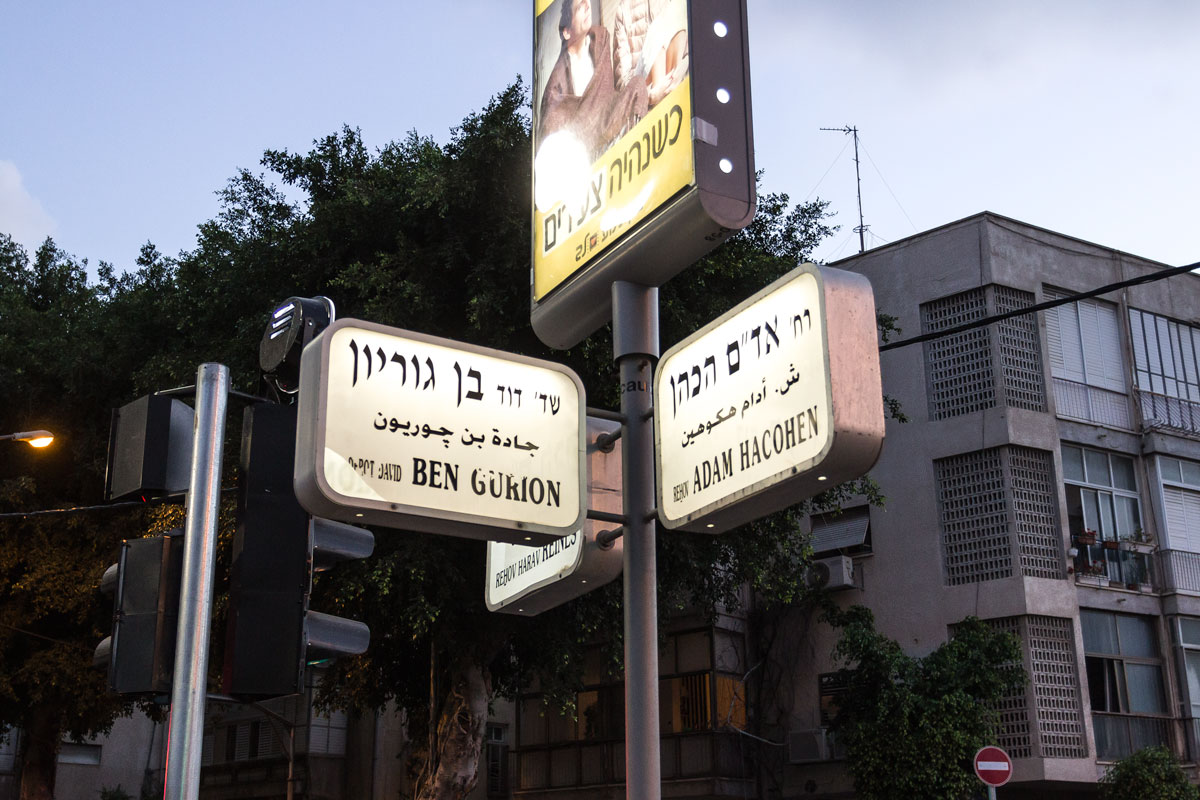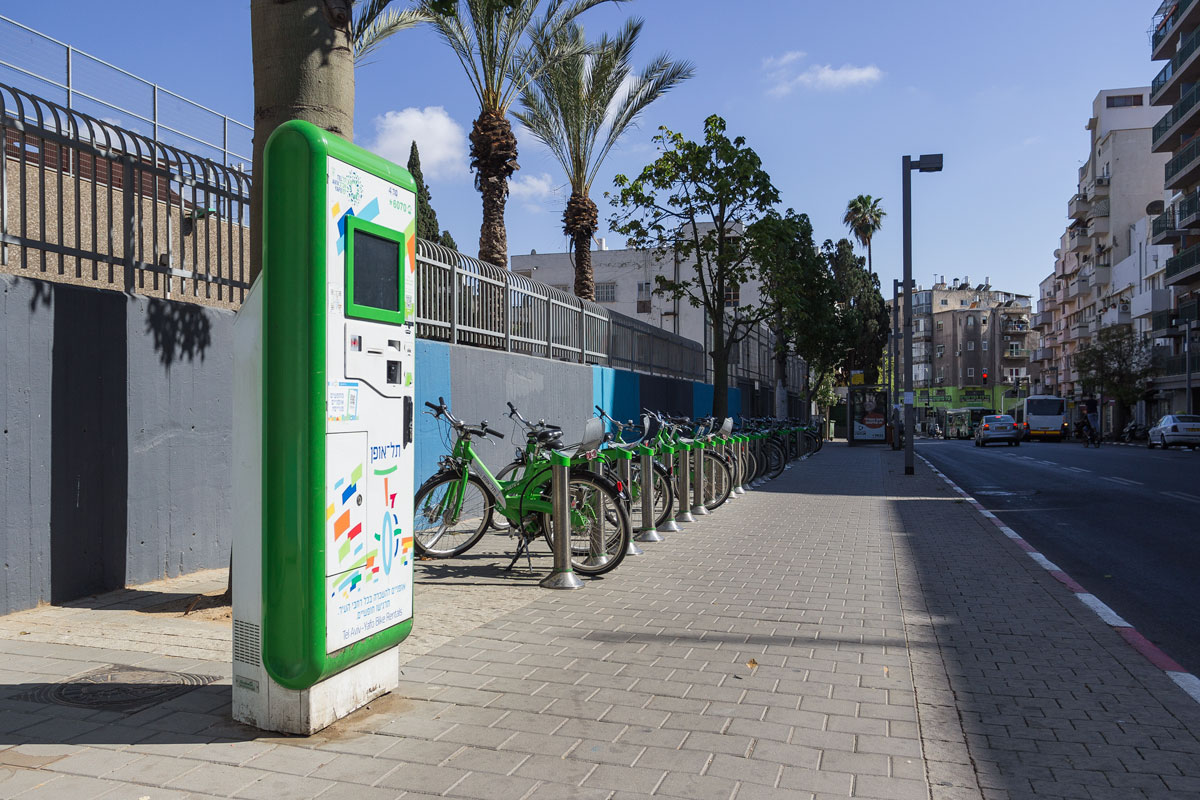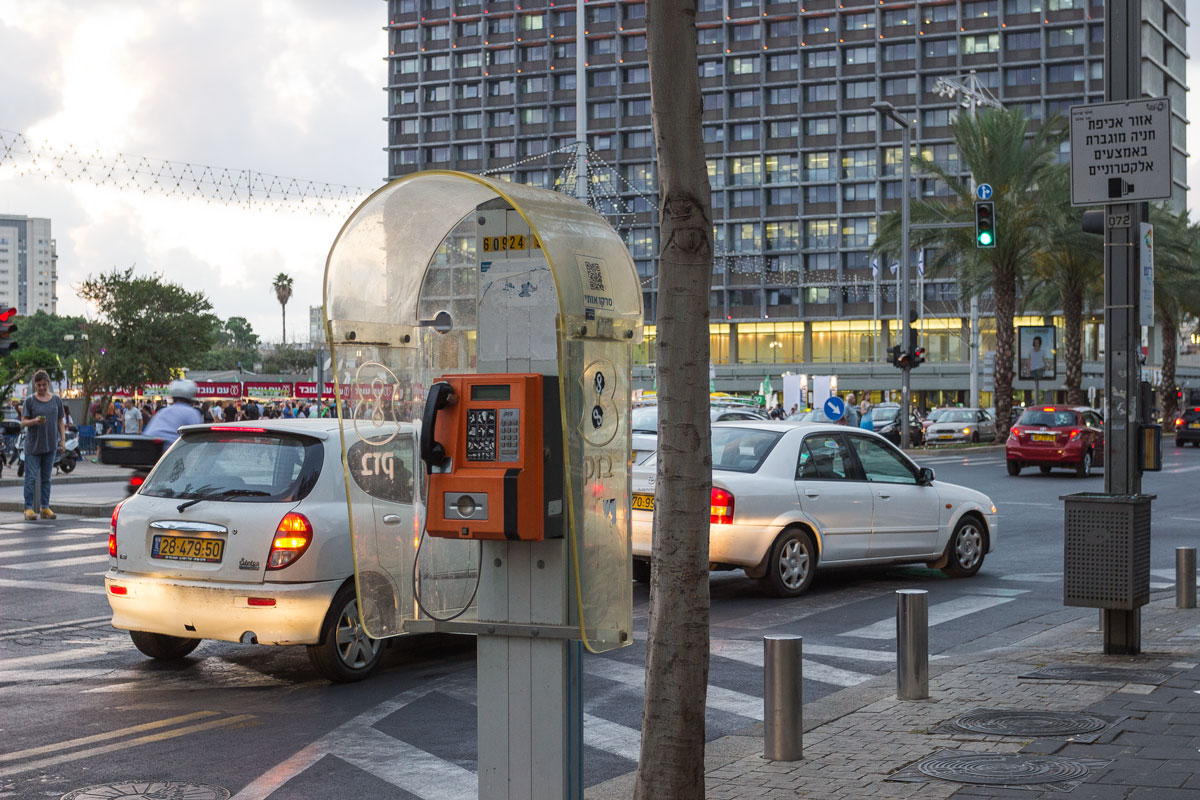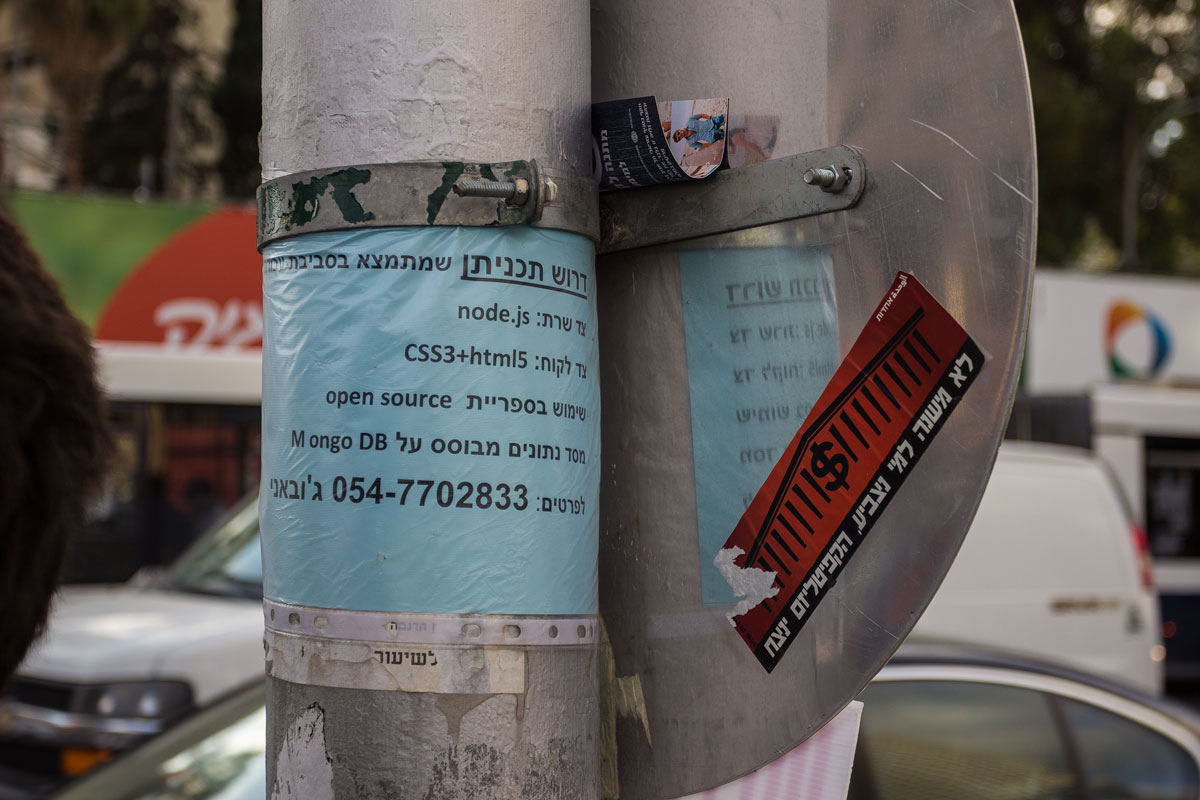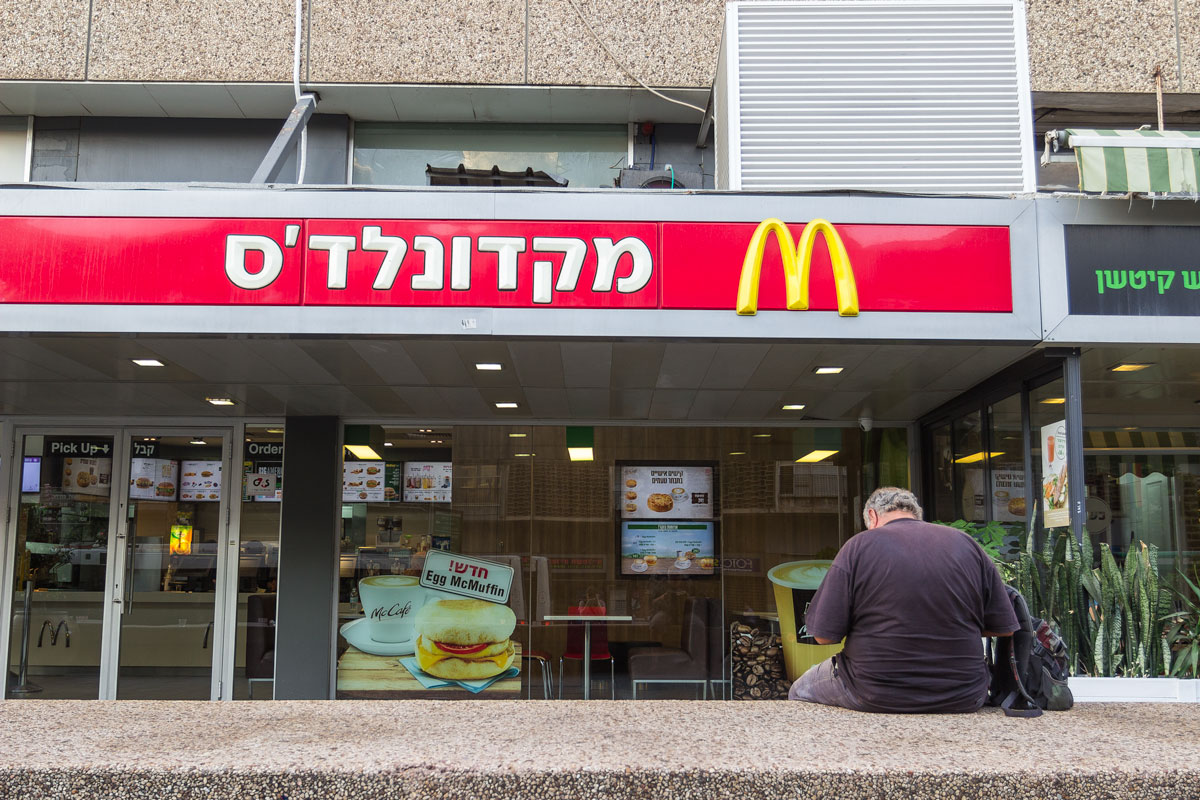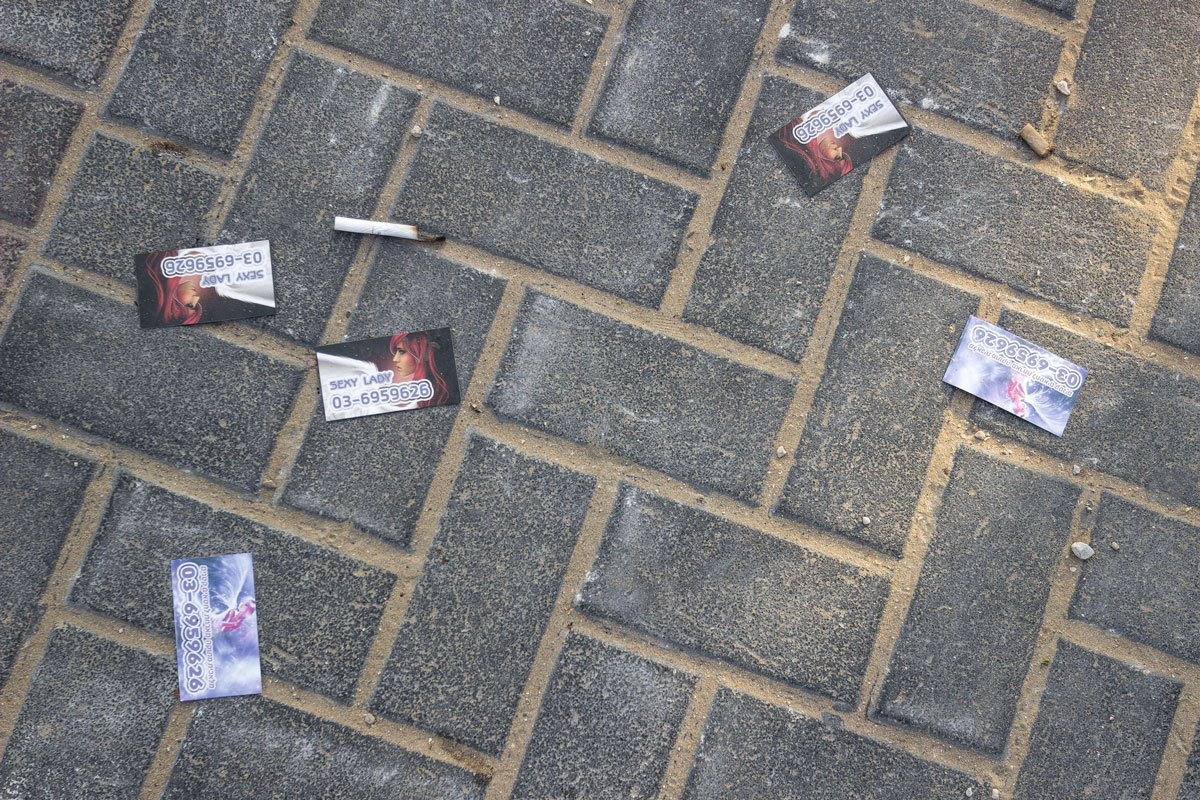Tel Aviv
The most beautiful place in Tel Aviv is Rothschild Boulevard. It is somewhat reminiscent of Tverskaya Boulevard in Moscow: a long, slightly curved street with trees and cafes.

In Tel Aviv, there are no major highways. Instead, several arteries pass through the city. In the center, the roads are modest, with Rothschild Boulevard even being just a single lane, divided by a green zone and equipped with narrow parking.

The majority of houses in this neighborhood were built in the 1930s.


As a rule, buildings in the center are often encountered in the Bauhaus style. Roughly speaking, this is a rounded German constructivism.

Of course, by modern standards, all of this may look somewhat modest. But in reality, it is a very interesting architectural style, a gem of urban planning from that time.


It must be said, architecture for those who understand. You read in the guidebook: “Tel Aviv has the largest number of Bauhaus-style buildings in the world, listed by UNESCO.” You come, you look. Well, just ordinary houses. Oh no, my friend. These are Bauhaus.

Some buildings have been nicely restored. Of course, it’s not the Bolshoi Theatre or anything. They’ve cleaned and repainted them — it looks decent now. The forms are simple, though.


On Rothschild Boulevard, there is a small square planted with red acacia trees.

The beauty is unreal.

The light shines through the tree canopies.


Если долго смотреть на эти деревья, можно ослепнуть от контраста. Цвета на фотографиях — не обработка, они в реальности так выглядят.

Therefore, in order not to lose your sight, you need to keep going. From Rothschild Boulevard, streets branch off in different directions, just as green and beautiful.


It’s just a pity that both sides are filled with cars.

But the courtyards are very nice.

Sometimes neighboring plots and parking spaces are neatly fenced off with a small fence.

Typical Tel Aviv entrances are open, located on the ground floor, with a corridor.


On the roofs of the majority of buildings in Tel Aviv and throughout Israel, you will find white water tanks. There is no central heating here. Why? It’s warm and sunny year-round. Cold water is pumped into the tanks using a pump, where it is heated by solar panels.

If you look at the houses from a slightly higher perspective, it feels like they are standing on stilts.

In reality, the stilts only support the structure and serve as a large “canopy” around the entrance, spanning the entire perimeter of the house.


The hallways themselves are very narrow. The elevator fits only two people, and the floors are tiny. Even the mailboxes hang outside because they wouldn’t fit in the hallway.



Not all of Tel Aviv is as nice, of course. Many neighborhoods on the outskirts of the city resemble Palestinian districts.

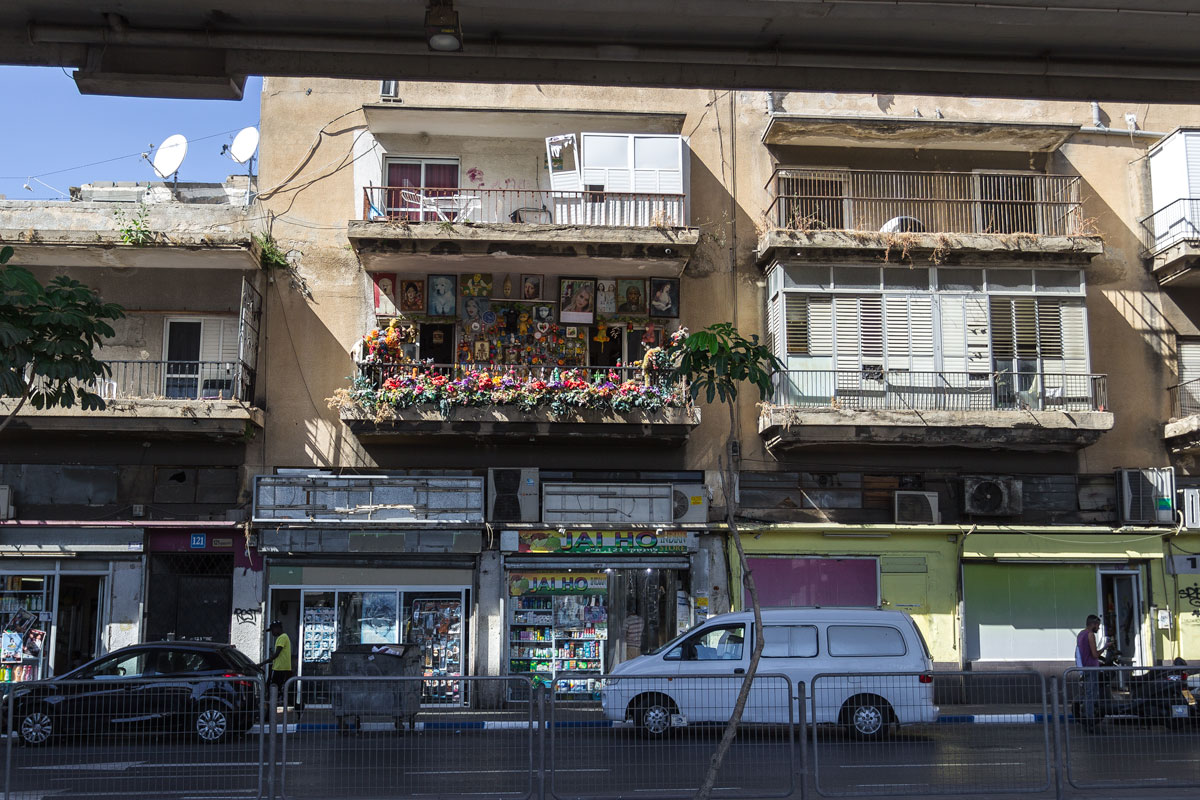

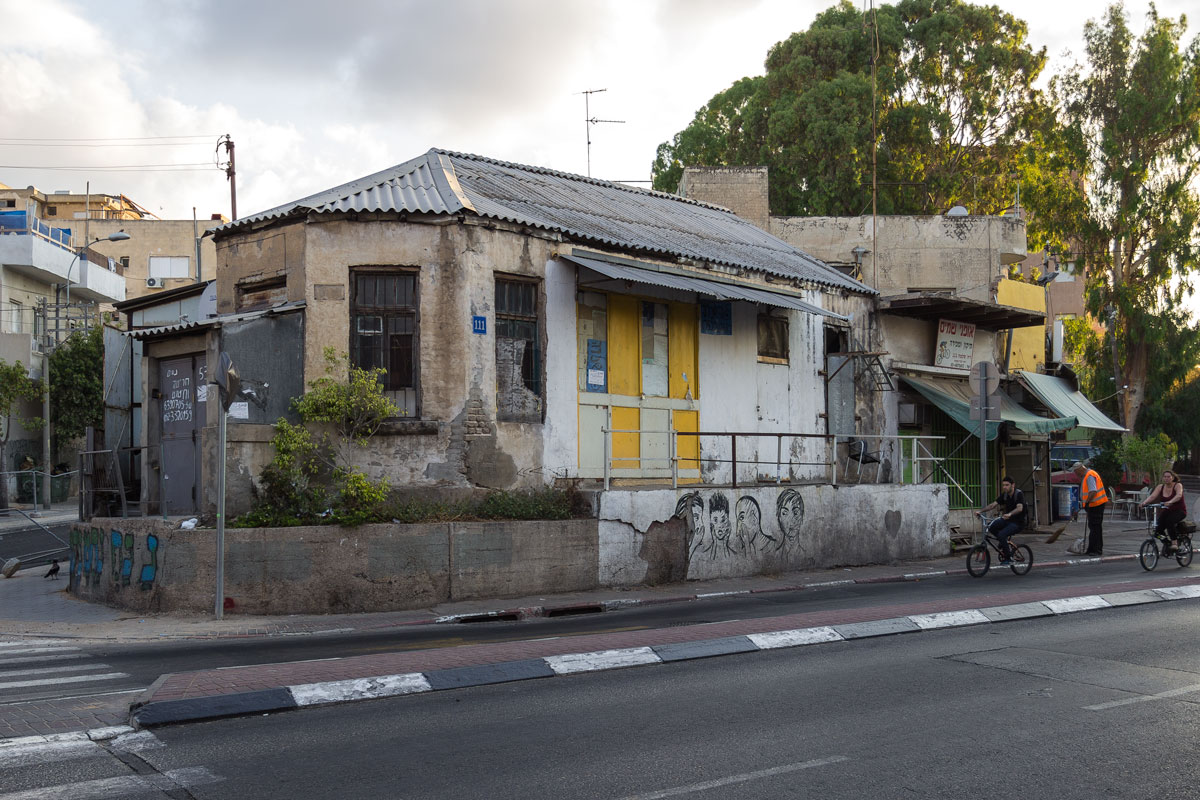

Streets.


The entrances and backyards of such houses are quite rundown.



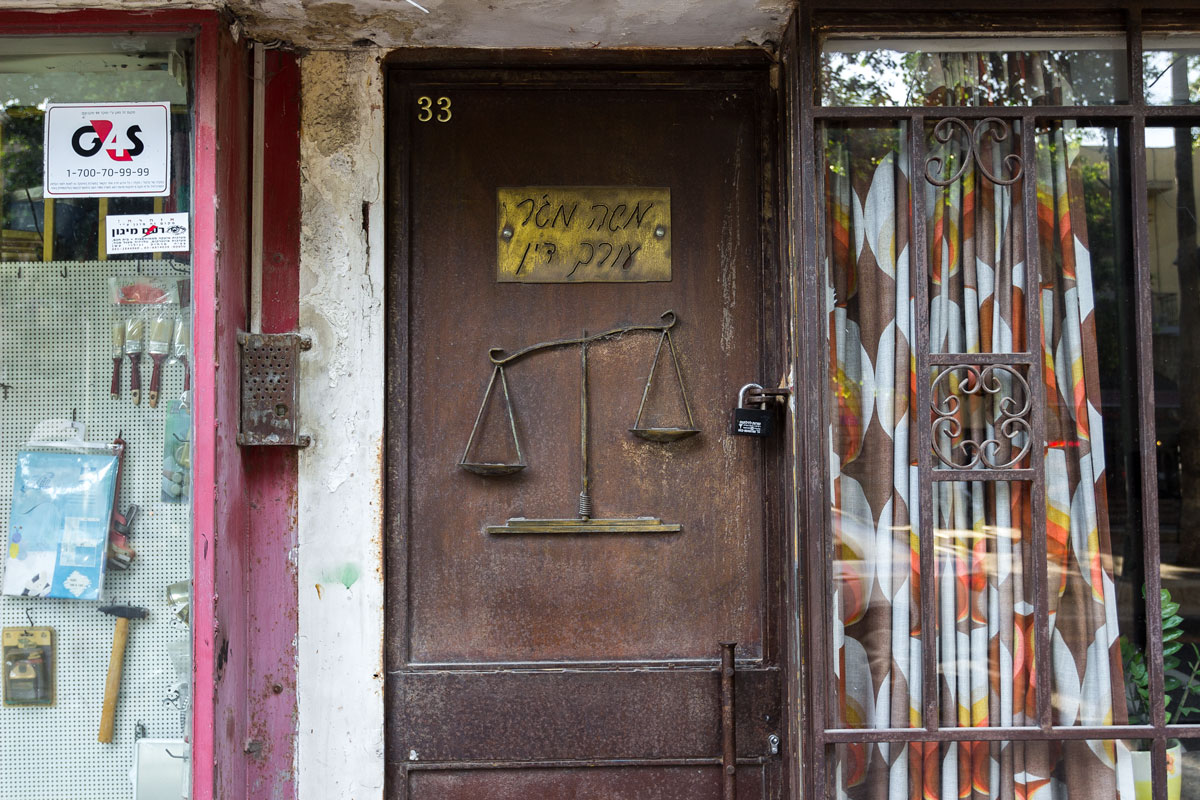


But it’s still beautiful. In spring, the city blossoms, and everything smooths out.

In affluent neighborhoods and in the city center, the streets look fantastic, resembling a resort-like European or American city.

The most important thing is the abundance of trees. Summers in Israel are hot, so the shade from trees comes in handy.


In general, Tel Aviv is very eclectic. You can find a mix of Bauhaus buildings, houses on stilts, Arab-style huts, and now in the distance, skyscrapers are visible.

In the northern part of the city, business centers and high-rise residential buildings are being actively constructed.
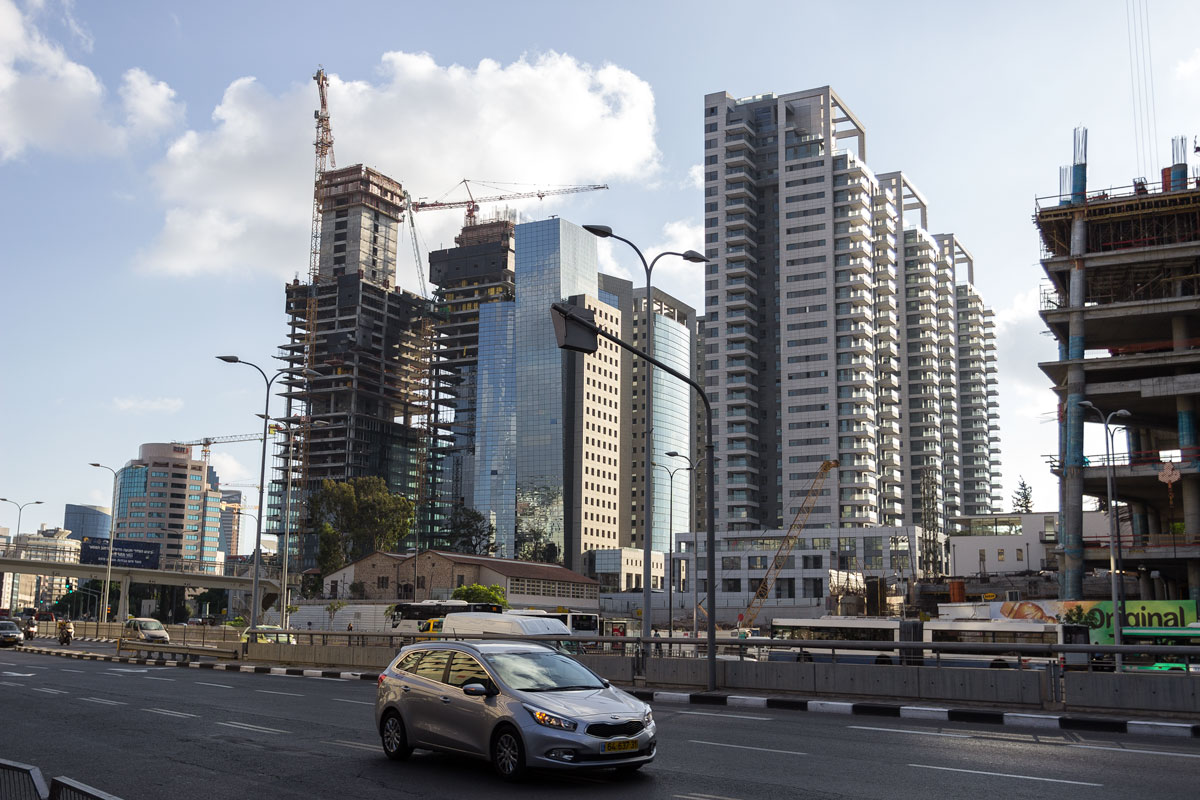
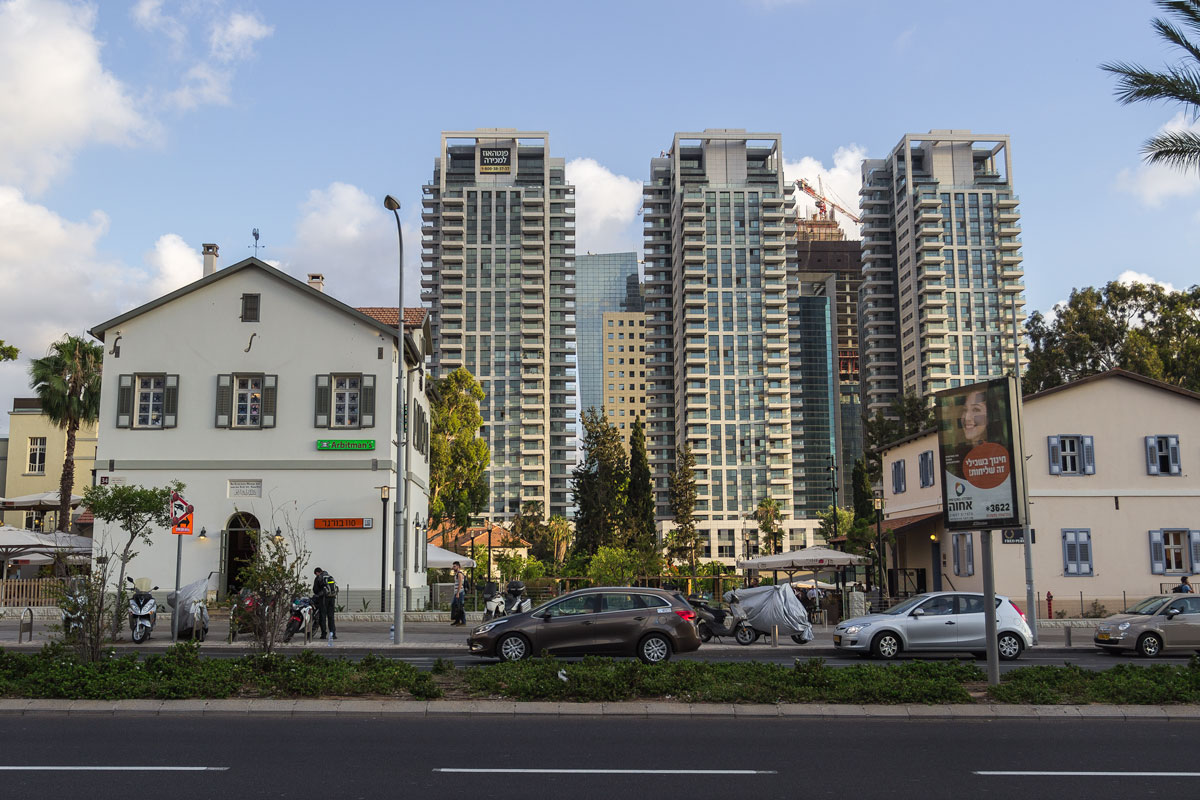
The most famous skyscraper in Tel Aviv is the Azrieli Center, consisting of three towers with a shopping center, a hotel, offices, and an observation deck.
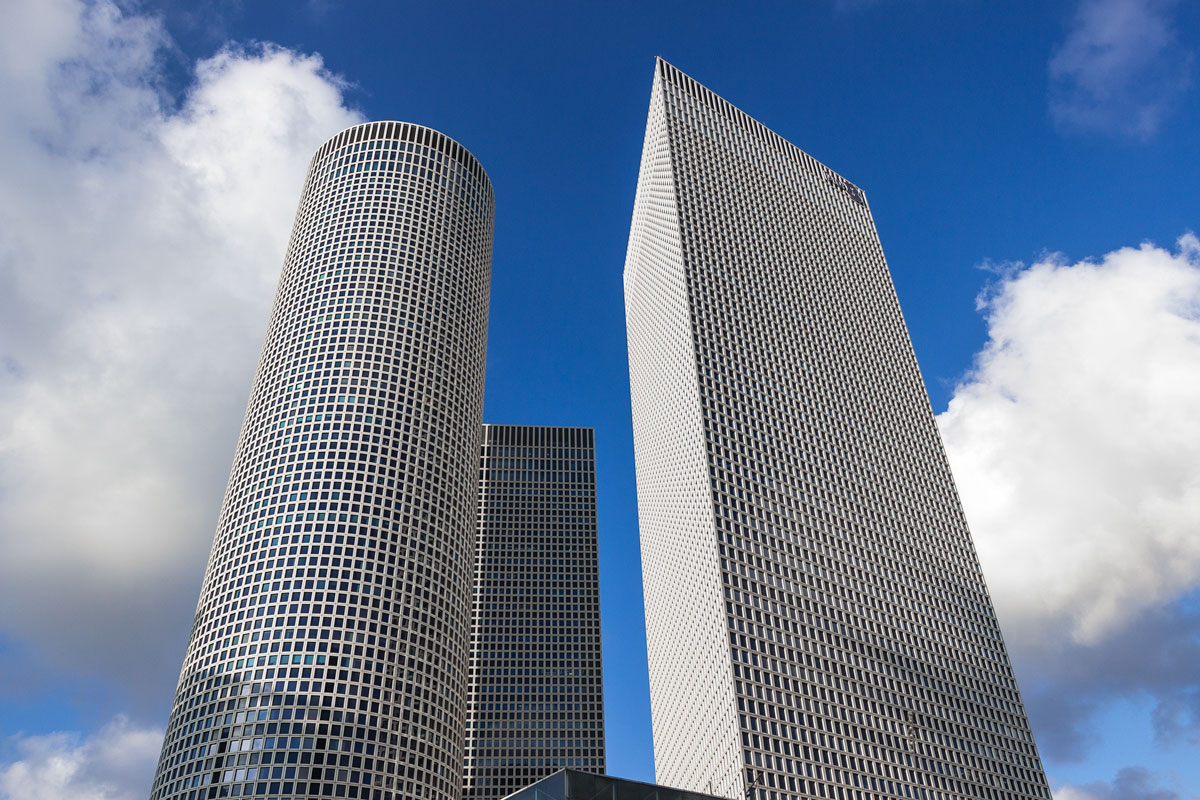
From the tower, you can see the entire city.
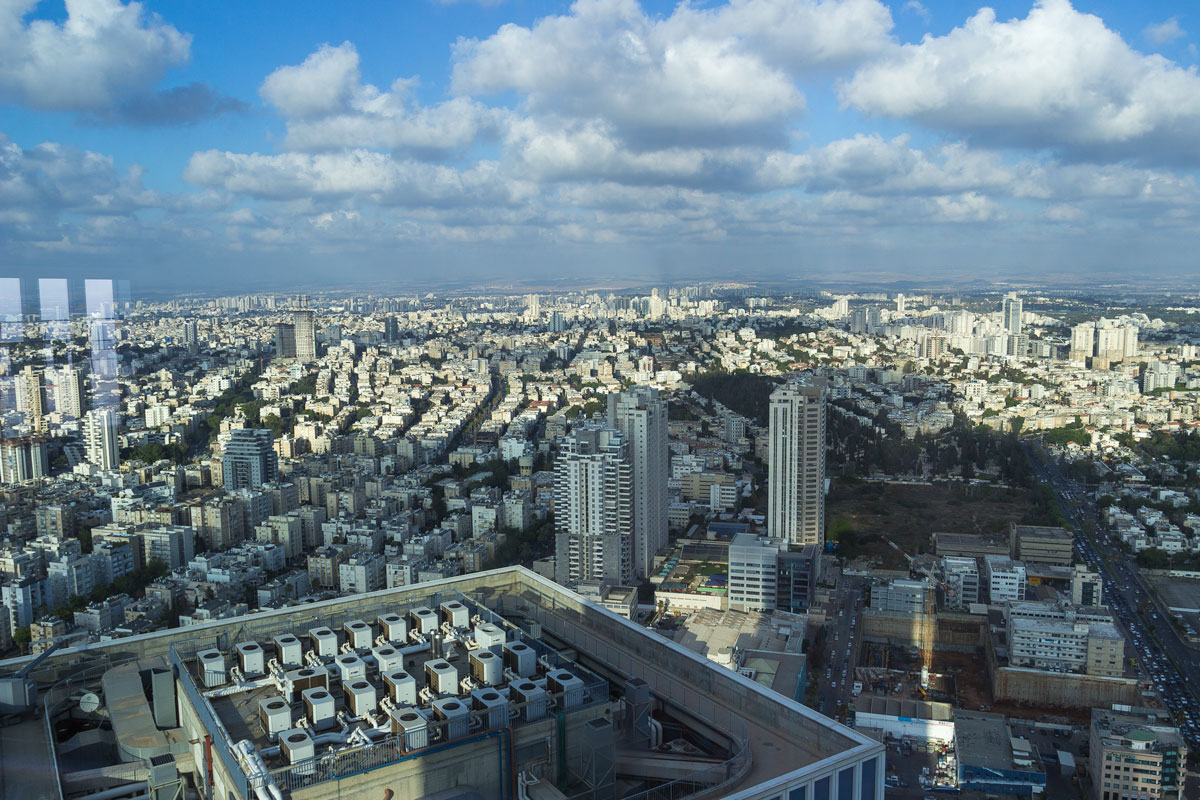
From here, you can observe the diversity of the city’s architecture. There are completely different types of houses everywhere. On the left, there are European-style buildings with red roofs that transition into a chain of those same houses on stilts. In the center of the frame, there is a cluster of skyscrapers, and on the right, the frame ends with multi-story buildings. Plus, here and there, you can see Bauhaus structures. A mix of various styles all intertwined.

All houses are surrounded by barrels of water, solar panels, satellite dishes, and air conditioners.


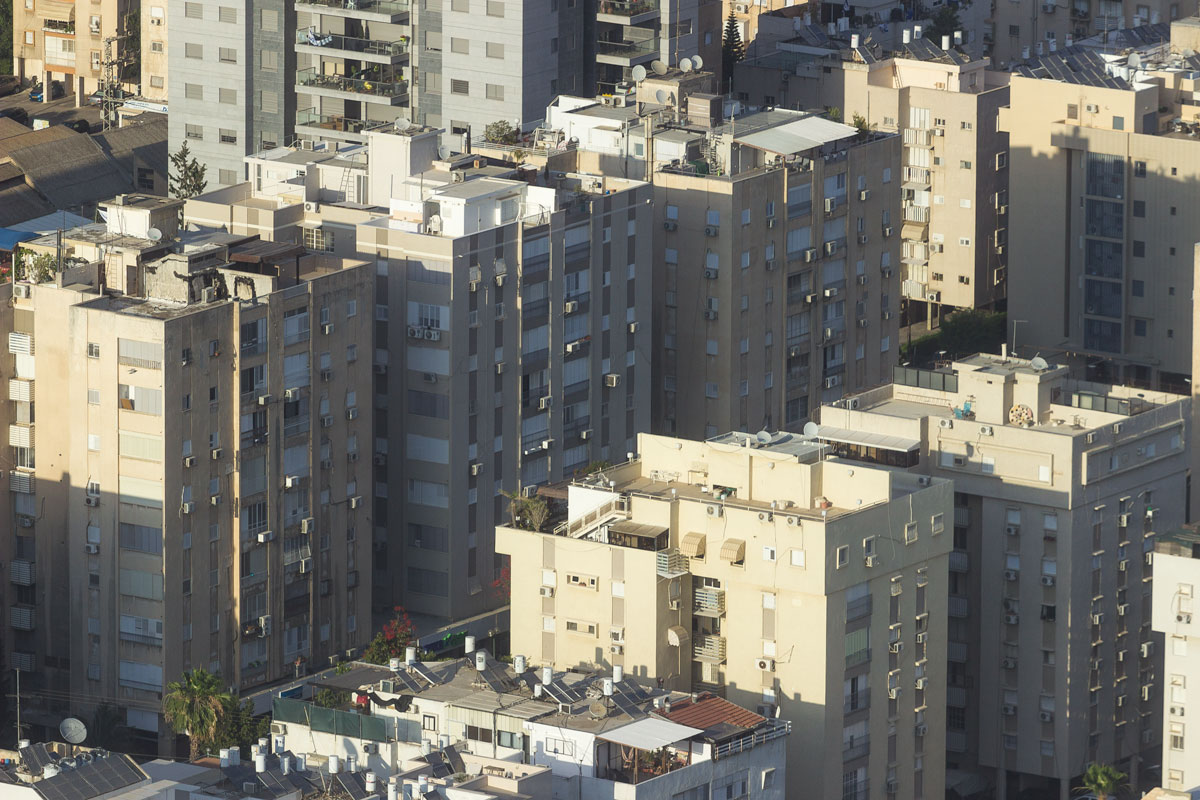
You can quickly get to the beach from the business center. Tel Aviv is not particularly considered as a resort, after all, it’s not Eilat. But the beach area here is very good.

Almost like Miami.




The beach itself is like this: a small strip of sand, the Mediterranean Sea, wooden huts, and palm trees. What else do you need?



People ride electric bikes and Segways along the waterfront.



The reader should have already noticed that rainbow flags are hanging everywhere on the beach. Yes, Israel is very tolerant towards gays. Gay parades are regularly held here, not only in Tel Aviv but also in Jerusalem. Of course, in the holy city, this is not perceived as normal by everyone, and there are constant attacks by Arabs or radical Jews, but the police in Israel work very well.
Support for sexual minorities in Israel is nonsense. As I have already mentioned, Israel is a tiny country squeezed between the river and the sea with large Muslim neighbors. In Israel itself, there is a 20% Arab population. Moreover, Jews are far from being liberal when it comes to religion: the Torah strictly prohibits homosexuality, just like the Quran.
However, none of this — neither war nor religion — has prevented Israel from granting full range of natural rights to homosexuals, from gay parades to same-sex marriages. In this sense, Israel is a unique example. Compared to Israel, the ridiculous excuses of other countries about “lack of support from the population” and “resistance to traditional values” are simply laughable. Here, in a country surrounded by 70 years of war and radical religions on all sides, it is not a problem. While elsewhere they say: the population will not support it.
During this trip to Tel Aviv, the entire city beach was adorned with rainbow flags.

In the northern part of the beach, there is even a special beach for gay people.

Of course, nobody sorts anyone. Everyone relaxes wherever they like.

I don’t know if the flags are hanging constantly. During my trip, there was a gay parade, and the city was probably specially decorated for that occasion. The flags were not only hanging on the beach but also on all central streets.

Against the backdrop of such social progress, it is unclear how such a strict religious phenomenon as Shabbat still persists in Israel. The weekly Jewish day of rest begins at sunset on Friday and continues until sunset on Saturday. On Shabbat, work is prohibited, and the definition of work is determined very delicately. Initially, there were thirty-nine types of forbidden work that served as the basis, for example:
- forbidden to plant vegetation,
- forbidden to bake bread,
- forbidden to grind and squeeze,
- forbidden to shear wool and sew,
- forbidden to hunt and slaughter animals,
- forbidden to build and destroy,
- forbidden to kindle and extinguish fire.
But since those ancient times when each person would bake bread daily and shear sheep have passed, and we now live in the age of electricity and the internet, the logical consequences of those basic works have transformed into modern prohibitions. For example, it is forbidden to turn on the lights. The burning of a tungsten arc in a light bulb constitutes fire, and lighting fire on Shabbat is prohibited. Similarly, one cannot drive a car, use a microwave, or operate a computer.
But the most ingenious among all is the prohibition on using an elevator. Pressing a button in an elevator leads to the creation of an electrical circuit, and where there is electricity, there is a spark! Even if it’s a microscopic spark, it still counts as fire!
As a result of this absurdity, the entire country remains without transportation for a day, and special elevators are installed in skyscrapers that simply operate with stops on each floor during Shabbat, so that Jews do not have to press buttons.
Shabbat is a big headache for travelers. During Shabbat, almost nothing operates. All stores, shopping centers, stalls—everything is closed, except for a few chain cafes. Well, nothing extraordinary. But during Shabbat, there is also no transportation! Tel Aviv simply becomes deserted for a whole day. Even trains and buses to the airport don’t run! It’s a nightmare, unimaginable folly in a modern country.
This is what Tel Aviv Central Station looks like on Shabbat. Six floors — not a single bus.

Fortunately, taxis and Arab minibusses operate on Saturdays. Minibusses in Israel are almost the same as in Russia: yellow, small, and uncomfortable. They are called “sherut” in Hebrew and “servisi” in Arabic.
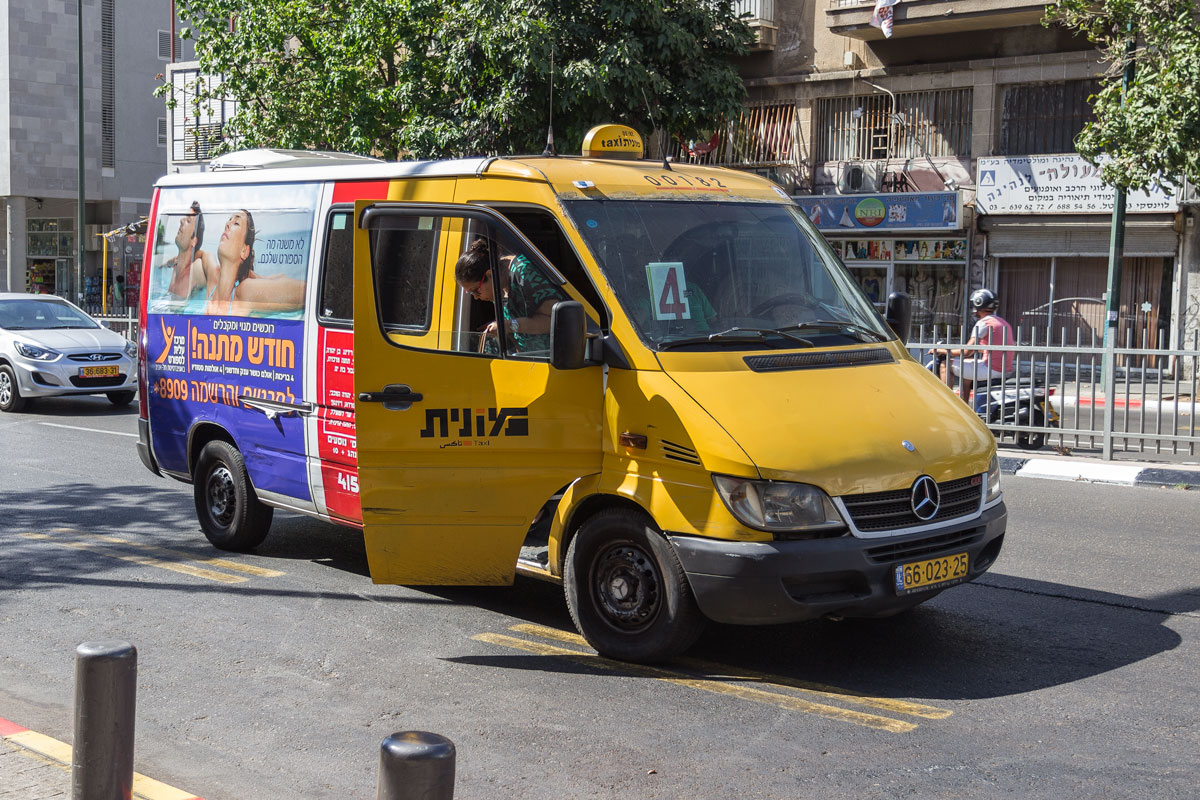
The buses themselves are good, modern. They run frequently throughout the city, and you can reach any place. There is nothing special inside the cabin.

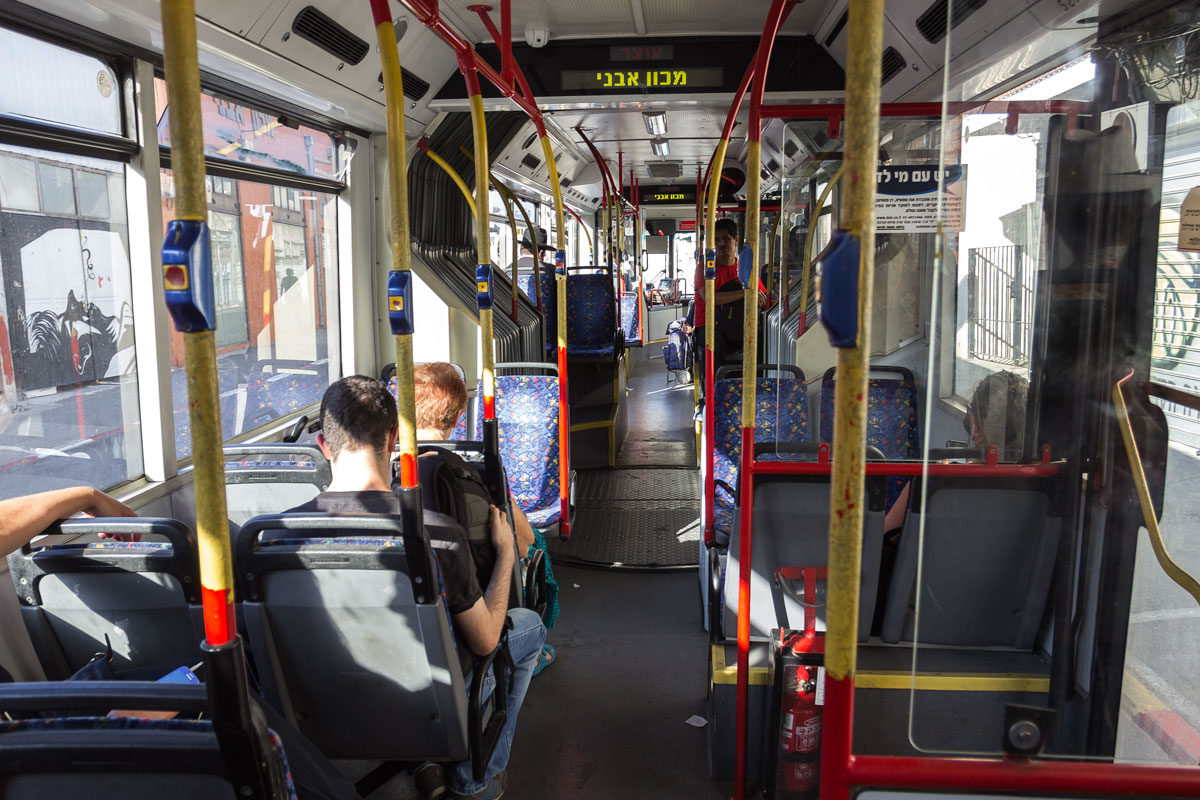
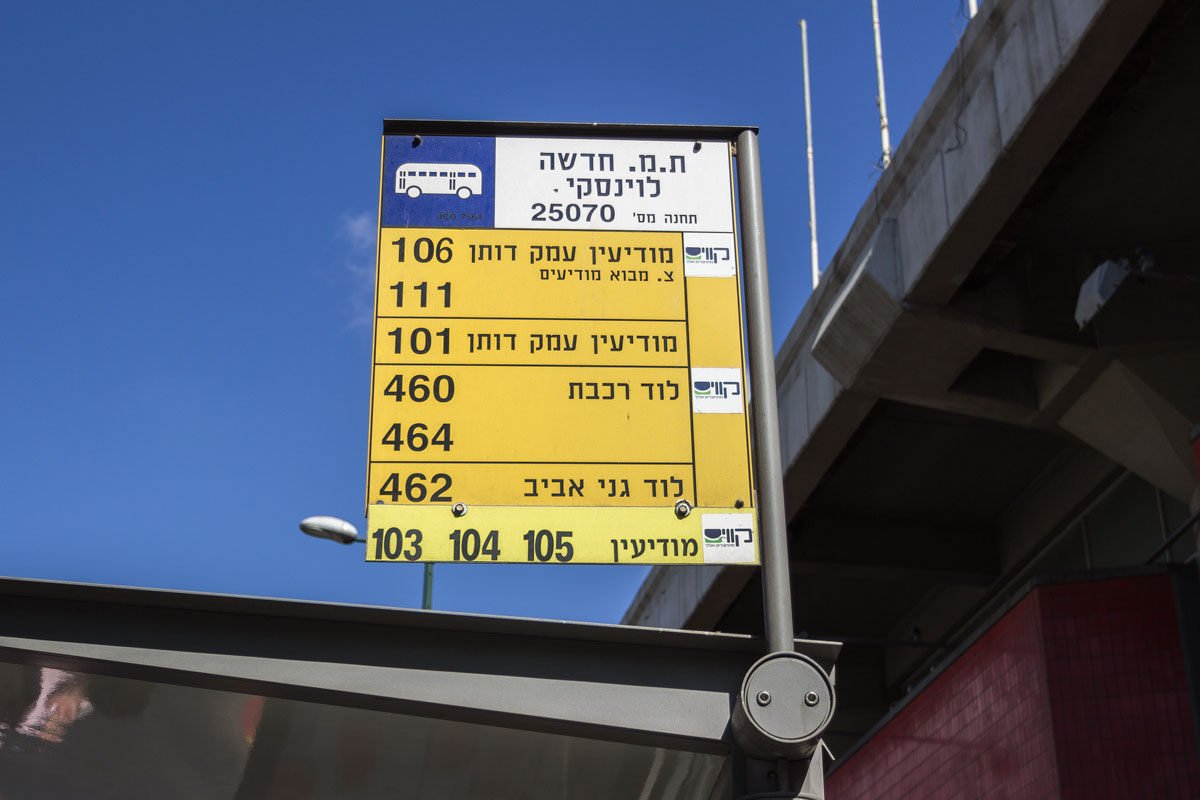
Nevertheless, Tel Aviv remains a modern and progressive city. Issues with Shabbat will eventually fade away, and foolishness will be left in the past. Israel already represents a significant breath of freedom in the Middle East. The city also has a nightlife, and the beaches are bustling at any time of day.
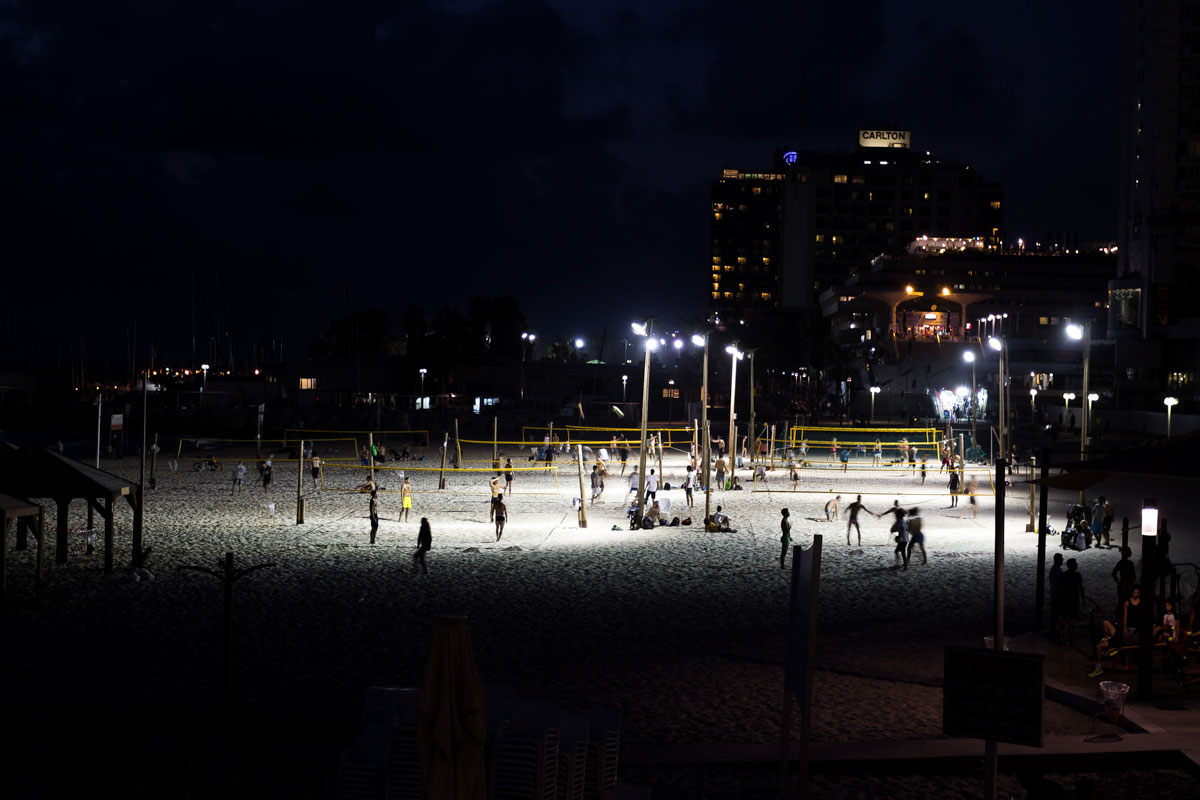
The waterfront is full of 24/7 cafes, bars, restaurants, and clubs — you can have a great time.
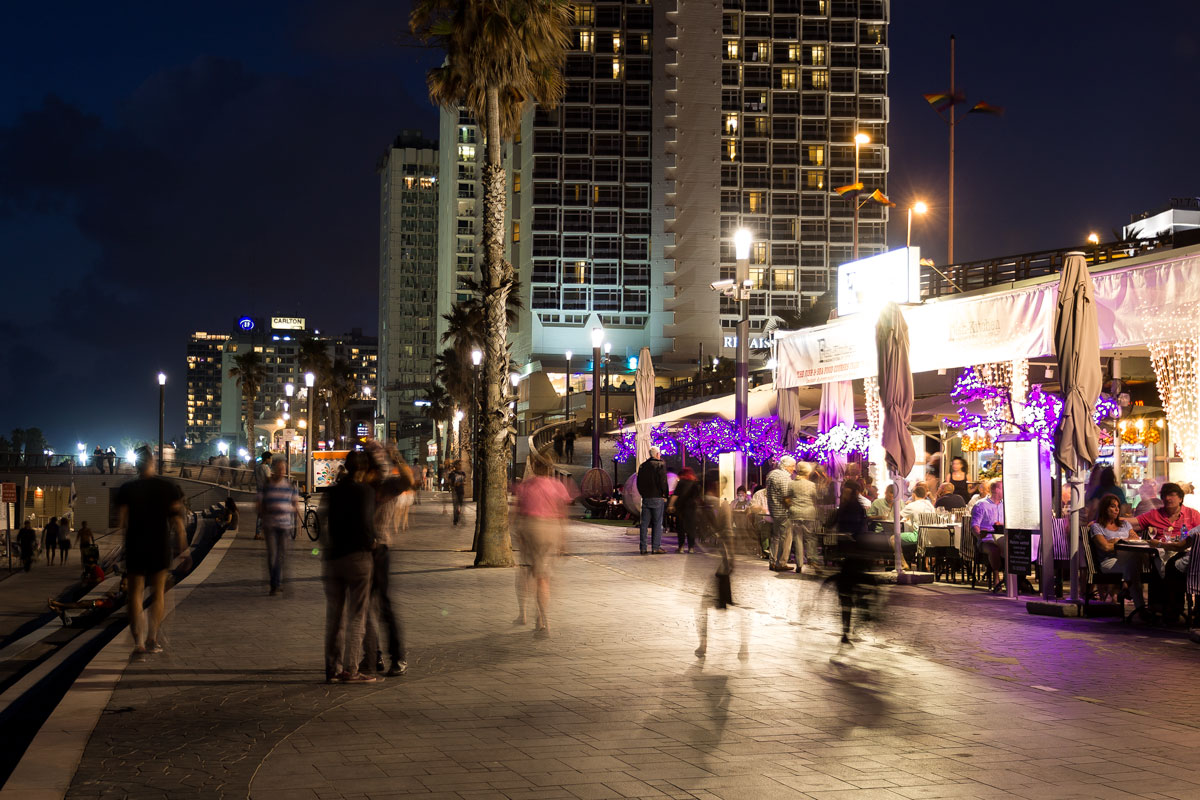
On the south side, the beach borders the old city of Jaffa.

A tourist spot where very little remains of the olden days.

Nevertheless, it is a nice, quiet corner where you can briefly visit if you happen to be in Tel Aviv.

⁂
City details: street signs in three languages with illumination, navigation, bike rental, pedestrian crossing button, recycling bin for plastic bottles, telephone booth, job advertisement seeking a programmer, McDonald’s in Hebrew, drainpipe, typical trade stall, drinking water fountain, secret code 16:20, business cards of prostitutes.
